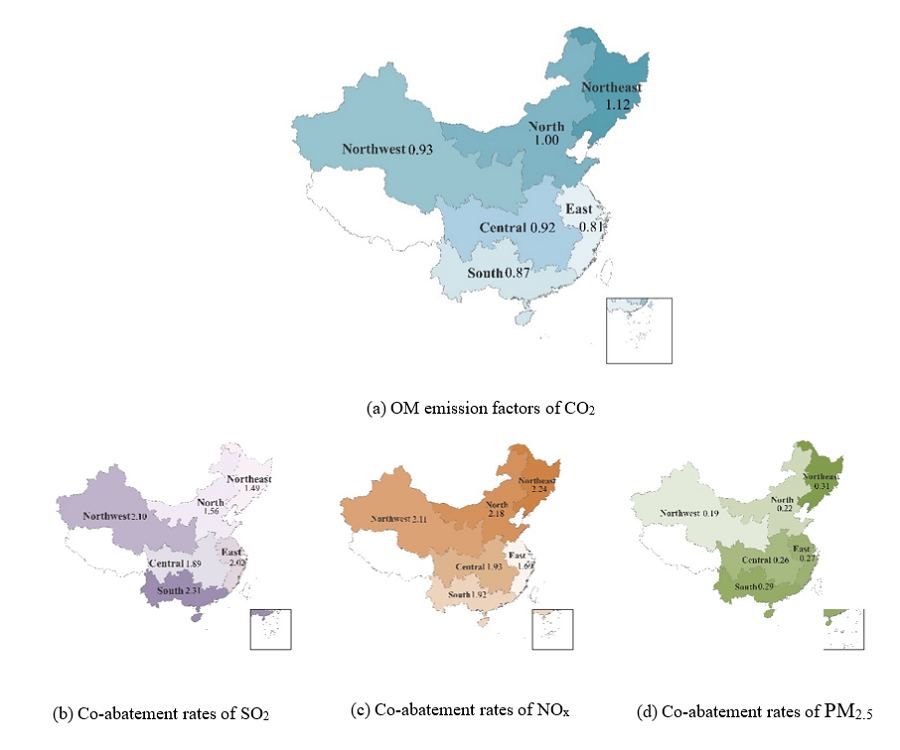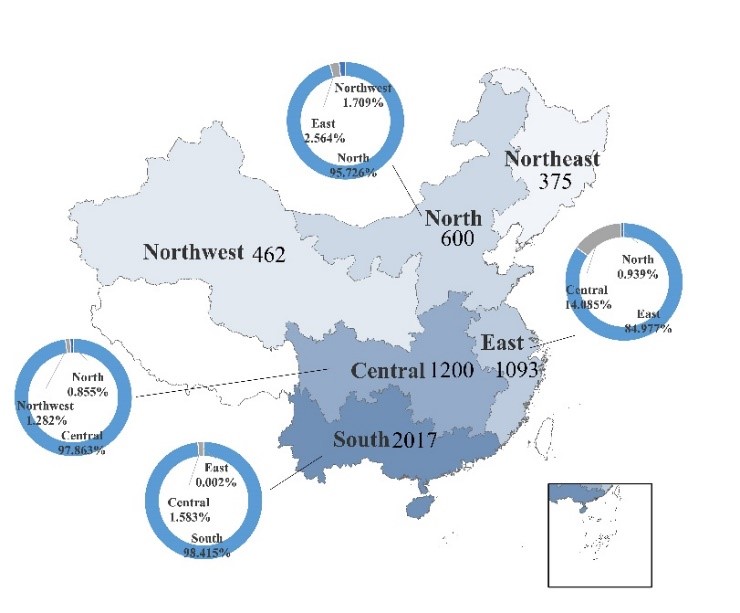On July 16th, a paper entitled "Incorporating health co-benefits into regional carbon emission reduction policy making: a Case study of China's power sector” was published in the journalApplied Energyby the Department of Earth System Science, with Cai Chaoji, a master student, as first author, and Professor Cai Wenjia as the corresponding author. Prof. Bai Yuqi, Postdoc Cui Xueqin, PhD student Deng Zhu are the co-authors of the paper. The paper shows the difference in the health co-benefits in regional CO2reduction and suggests the health co-benefits of CO2reduction and their trans-regional distribution should be taken seriously when making regional carbon emission reduction plans, in order to maximize the social benefits of CO2reduction.
China’s power system is divided by regions, however, the operation between the regional power system is not independent and cross-regional transmission is quite common. The increasing proportion of the widespread cross-regional transmission in China’s power system complicates the issue of the carbon mitigation and human health co-benefits. What’s more, the mixed sources of the electricity power, such as firepower, wind power, water point, title energy, etc. makes it difficult to quantify the regional health co-benefits of carbon reduction, combined with the cross-regional transmission.
To quantify the transfer effect, this paper took China’s power sector as an example and quantified the operating margin emission factors of SO2, NOXand PM2.5in China’s six power grids. Then the co-abatement rates of these three pollutants when reducing each kiloton of CO2in different grids were calculated. Finally, considering different grids’ meteorological conditions, population densities, baseline incidences, baseline death rates, and the inter-grid electricity trade, this paper computed and compared the values and regional distribution of health co-benefits per kiloton of CO2reduced.
It is found that grids with the highest co-abatement rates in conventional air pollutants do not necessarily bring maximum health co-benefits. Although the northeast grid could achieve the largest co-reduction in NOXand PM2.5, it is the south grid that has the largest health co-benefits. The differences in health co-benefits of the same amount of CO2 reduced among grids vary as much as fivefold. Besides, the share of trans-grid health co-benefits can be as high as 14.1% if CO2reduction takes place in the east grid. Therefore, it is suggested that the health co-benefits of CO2reduction and their trans-regional distribution should be taken seriously when making regional carbon emission reduction plans, in order to maximize the social benefits of CO2reduction.
After the paper was published,China Science Dailytook the initiative to report on this research, and invited Dr. Cui Qi from the Economics and Resource Management Research Institute of Beijing Normal University to comment on the article. Dr. Cui Qi believes that this research can link the decisions scattered in different departments and provide scientific support for formulating more rigorous and comprehensive policies. It is expected to achieve the maximum benefit of energy saving and emission reduction with less effort. The press release was published in the August 5th issue of theChina Science Daily.
This research was jointly funded by National Key R&D Program of China, National Natural Science Foundation of China, Tsinghua-Rio Tinto Joint Research Center for Resource Energy and Sustainable Development, and Science and Technology Foundation of State Grid corporation of China.
fulltext link:
Https://doi.org/10.1016/j.apenergy.2019.113498


The values of operating margin emission factors of CO2, co-abatement rates per unit CO2emission reduction, and the health co-benefits per unit of CO2emission reduction in each grid in China.